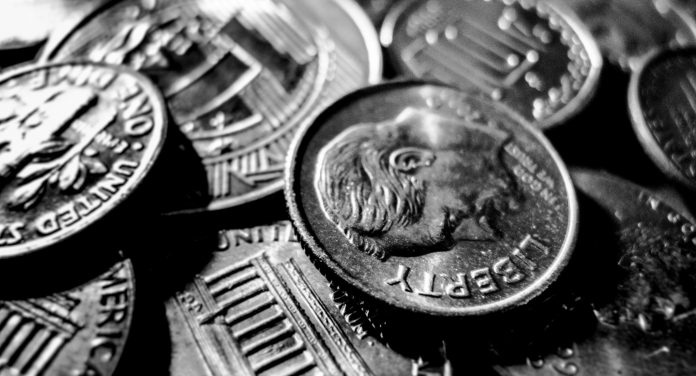The Australian dollar slipped over 1.5% versus the US dollar across the previous week, even after the Federal Reserve cut US interest rates. The pair dived to a low of US$0.6758 on Friday. As the new week has kicked off the pair is lacking direction, edging up just 0.05%.
The Australian dollar gave a muted reaction to a mixed batch of data earlier today. Data published jointly by the Commonwealth Bank of Australia and Markit Economics showed that activity picked up in the Australian service sector but that the manufacturing sector fell into contraction.
The manufacturing PMI slumped to 49.4, down from 50.9 in August and below market expectations of 50.9. This is the first time that the Australian manufacturing PMI has recorded a contraction since the survey began in 2016.
Weakness in the Australian manufacturing sector comes as manufacturing sectors across the globe are showing signs of slowing or contracting. Economists point to the ongoing US — Sino trade dispute hurting confidence and negatively impacting global demand.
However, a positive from today’s data was the rebound in service sector activity. The service sector PMI jumped from August’s 49.1 to a solid 52.5 in September. The encouraging service sector figures is helping support the Australian dollar.
| Why does strong economic data boost a country’s currency? |
| Solid economic indicators point to a strong economy. Strong economies have strong currencies because institutions look to invest in countries where growth prospects are high. These institutions require local currency to invest in the country, thus increasing demand and pushing up the money’s worth. So, when a country or region has good economic news, the value of the currency tends to rise. |
Investors will remain focused on the Australian economic calendar with consumer confidence due to be released later. The weekly measure of the consumer mood fell 3.5% last week as respondent’s perception of the economy worsened. Another heavy fall could send the Australian dollar lower.
Will US PMI Data Lift Dollar?
The US dollar saw strong demand across the previous week despite the Federal Reserve cutting interest rates by 0.25%. Investors and analysts alike had been expecting the Fed to cut rates. However, market participants had also expected the Fed to signal additional cuts through the remainder of the year. As the Fed gave no indication of further cuts, they were seen to be adopting a less dovish stance. This boosted the dollar.
| Why do interest rate cuts drag on a currency’s value? |
| Interest rates are key to understanding exchange rate movements. Those who have large sums of money to invest want the highest return on their investments. Lower interest rate environments tend to offer lower yields. So, if the interest rate or at least the interest rate expectation of a country is relatively lower compared to another, then foreign investors look to pull their capital out and invest elsewhere. Large corporations and investors sell out of local currency to invest elsewhere. More local currency is available as the demand of that currency declines, dragging the value lower. |
Dollar investors are now focusing their attention on US PMI data which is due to be released. Analysts are expecting activity in the US manufacturing to remain steady. However, they also expect increased activity in the US service sector. Should this be the case, the dollar could advance further.
| What do these figures mean? |
| When measuring the value of a pair of currencies, one set equals 1 unit and the other shows the current equivalent. As the market moves, the amount will vary from minute to minute.
For example, it could be written: 1 USD = 0.6784 AUD Here, $1 is equivalent to approximately A$0.67. This specifically measures the US dollar’s worth against the Australian dollar. If the Aussie dollar amount increases in this pairing, it’s positive for the US dollar. Or, if you were looking at it the other way around: 1 AUD = 1.4739 USD In this example, A$1 is equivalent to approximately $1.47. This measures the Australian dollar’s worth versus the US Dollar. If the US dollar number gets larger, it’s good news for the Aussie dollar. |





